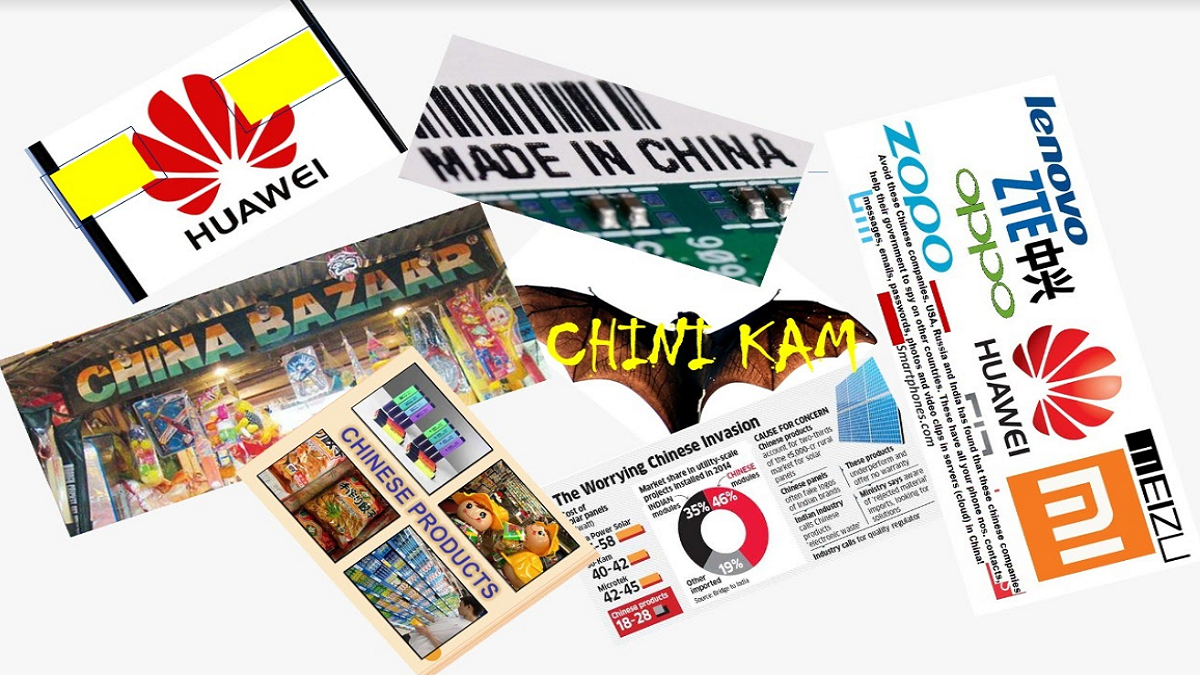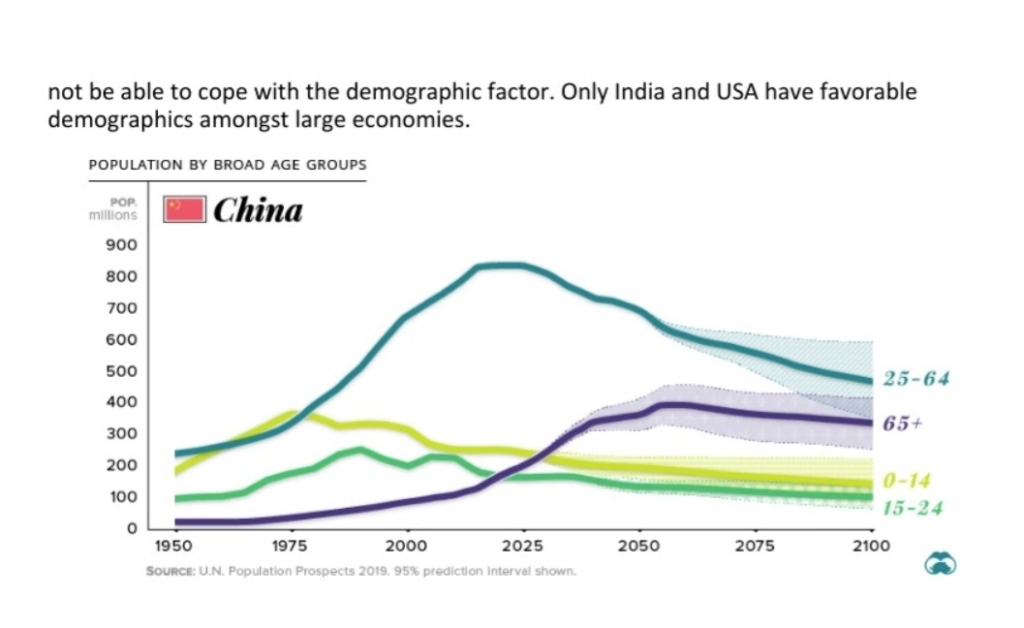


Profound myopic vision consistent with its turbulent history has led China to squander a strategic opportunity to achieve global greatness when the Wuhan virus broke. If only they were honest about their “Peaceful Rise” rather than being treacherous, they would have been a superpower by now. So anything long-term about Chinese is a carefully cultivated myth. Their invincibility was brutally exposed by our gallant Biharis, Punabis, Sikhs, Thambis and others in Galwan Valley. The action of our boys shows that a united India can ensure “Chini Kam”. It would not only be appropriate for our diabetic population but also for all of us if China is kept at arm’s length. In any case I think the Rubicon has been crossed and ‘Chini Kam’ is inevitable.

Review of the Situation
Let us see where we stand now. The agreement to disengage at the Corps Commander level meeting is a baby step in a path where Chinese treachery is the norm. In the meanwhile, PLA continues its mobilization. Coercion attempts continue through juvenile military videos released by Global Times. However it is clear that Galwan has shaken China, which cannot stomach the body bags it is hiding. A US news report also confirms Chinese casualties and premeditation. At the other end, in the South China Sea, three US carriers are on the prowl. A rattled China has hidden its third aircraft carrier (under construction). China took umbrage and threatened Japan over naming a disputed Island as Tonoshiro Senkaku. Japan promptly deployed its missiles. A US China military spat is highly likely as per South China Morning Post. Sino Australian ties are going downhill. China is now virtually in a two-front situation and militarily bottled.
Signals from China are a mixed bag. China has officially shifted goal posts by laying claims to the entire Galwan Valley. However the Galwan thrashing has also made China seek peace, cooperation, and coexistence as great powers through a recent CGTN video (https://www.youtube.com/ watch?v=tfkbsnhbXa8). A strategic assessment by a Chinese in ‘War on The Rocks’ talks of a ‘face saving’ mutual compromise. Now the Chinese Ambassador talks of meeting halfway. The belligerence has reduced. The Chinese aggression is now being explained as unplanned. However all these experts expect India to align with China. Stuff it! An isolated China has chosen to live in a fool’s paradise. In the meanwhile, the Russian view that India should be a permanent member of the UNSC would not have gone well in China.
From here on ‘Chini kam’ must be a national approach encompassing political, economic, diplomatic, geopolitical and military dimensions. To this end there is a requirement to do a SWOT analysis of China, from which options should be drawn out encompassing short, mid and long terms. These should be adopted situationally. In this context, a SWOT analysis of China is attempted in brief. The emphasis is on Weaknesses and Threats facing China since the Strengths and Opportunities are too well known.
Strengths
Politically, China is decisive, resolute, and determined. Its ambitious leadership aims for global dominance by stoking Han nationalism. Militarily it is well equipped with strong Missile, Info, and Cyber forces and an expanding Navy. Strong infrastructure gives it good reaction capability. Its reorganized Command and Control structure is good. China takes risks to seize the initiative. Propaganda, Psychological, Legal and Influence ops enhance aggression. Its diplomacy is well-oiled and aggressive. It is expanding control over international institutions. It uses Pakistan and Nepal as catspaws after securing its flanks through N Korea and Russia. It is experienced in being isolated. Economically it is strong and predicted to grow despite the viral shocks. It leverages its huge market ruthlessly. Its manufacturing base has revived from the pandemic.
Weaknesses
Political: The grim job and unemployment situation are of prime concern for Chinese leaders since it could lead to social unrest. To create enough jobs the economy must grow above 3%. It faces turmoil on multiple fronts simultaneously in Tibet, Xinjiang, Hongkong and Taiwan. If Tibet and Xinjiang see heightened tensions, China will be extremely hard pressed. Apart from problems in quelling unrest, its ‘Go West’ development theme is likely to unravel. The Virus has started to reerupt. Some parts of China are likely to remain under lockdown perpetually. The cultivated image of the pandemic under control, is getting dismantled and leads to loss of face. To survive and remain in power, the CCP manufactures and showcases successes through heavy censorship and control of the media despite grave failures. Lastly, China’s scant respect for a rules-based order has generated international distrust. Hence if it takes legal recourse to international institutions it might not be entertained.
Military: Lack of combat experience was evident in Galwan. Its promotional videos indicate that training is unimaginative. PLA is beset with corruption. Its ambitious leadership is under pressure to deliver. They might crack if put under the hammer. India will not back off or get intimidated by the PLA. China cannot enforce a military solution on India and is susceptible to a reverse. Any Indian incursion across the LAC will have serious implications for China. This is within Indian capability since China lacks defenses across the LAC. Fighting in High Altitude has huge issues of logistics. It is one thing to mobilize a mechanised force into the area and another thing to keep it there. The longer PLA is kept in strength nearer the LAC, the greater will be its logistics problems. As the situation has emerged, PLAN cannot even exit the South China Sea. IN has the strength to threaten its energy security. The PLA and PLAAF do not have the troops to task to overcome IA and IAF. Minor actions have no effect on the overall picture. China has bitten more than it can chew. China is emerging as a fat man with short legs.
Geopolitical/Diplomatic: China does not have the wherewithal or acceptability for Global leadership due to widespread resentment. Its Wolf Warrior diplomacy has been too aggressive, intrusive, and counterproductive. It has reduced space for diplomatic solutions. USA, Australia, ASEAN, India, Japan, S Korea, and Taiwan are all adversarial to China. China faces international backlash, isolation, and worst-case scenarios. It must fight a lone hand without any allies barring Pakistan and North Korea.
Economic: The Chinese economy faces multiple weaknesses. These include deglobalisation, decoupling, export shocks, derailment of Made in China 2025 Plan, and huge setbacks in BRI and CPEC. The replacement — Health and Digital Silk Roads are sops. It has a debt bubble which has inhibited stimulus and cannot print its way out of trouble. The Yuan is not accepted as international tender. Its major capital investment is in housing which is unproductive. The Virus will take its economic toll to retard China. The current military tensions place a heavy burden on its future economy. The demographic profile is going to compound the situation. China’s working population is currently peaking. Henceforth while its productive population (25-65) reduces, its nonproductive population (65+) increases to place demands on the economy. Hence any small reduction in its income stream will have a geometric negative effect hereafter. Reduction of Chinese imports anywhere in any manner will add to Chinese burdens. Five years back an Australian Research Paper suggested that China was at its peak and would only decline there on. In the current situation the decline might be faster since a weakening economy will not be able to cope with the demographic factor. Only India and the US have favourable demographics amongst large economies.
Opportunities
China perceives an opportunity to achieve its ‘One China Dream’ by controlling its restive rear areas of Tibet and Xinjiang, assimilating Hong Kong, and Taiwan by force. There is opportunity to emerge as the only major country to control the Virus. Militarily China can control the South China Sea and expand into IOR quickly. It can teach a major lesson to India since the QUAD and USA will not help beyond a point. Simultaneously it can transform into an experienced force. The US decline allows it to dominate International organisations, establish undisputed regional dominance, put the QUAD under threat and split the opposition to deal with them individually. Unshackling from the global order allows it to create new structures and rules. Increased internal consumption, the proposed Hainan Free Trade Zone, growing African and South American markets and the Health and Digital Silk Road could revive its economic dominance.
Threats
Political: China’s over ambition and fast forward mode to superpower status is an Imperial overstretch which could derail. The overconfidence of a single party system also induces imbalance which could lead to collapse. A second wave of the Chinese Virus anywhere, is only likely to enhance the stigma associated with it. Lastly, China has gone through many ups and downs in its history. Is it on the verge of another down?
Military: Too many fronts are beyond its capability if things spin out of control. Except for sinking a Vietnamese fishing boat it has achieved nothing significant. Its face-offs with a nuclear power like India entail huge escalation risks. India could exercise a Quid Pro Quo action at a time and place of its choosing. Most importantly, China seems to have opened an otherwise closed back door. It is a great destabilising threat.
Diplomatic/ Geopolitical: China has underestimated US resolve and ability to bounce back and while overestimating its own ability to dominate. The US has started to impose a denial regime in education, operation of Chinese firms, access to technologies, international flight operations, diplomatic access, access to financial systems, deglobalisation and much more. Invariably all the rich countries will flock to the US. An isolated and untrustworthy China could whither. With India helming the WHO, cover ups on the Virus will not be easy. Additionally India has been elected to the UNSC and there is talk of it being a permanent member. The development of QUAD, India-Australia ties, India-Japan ties and G7 plus makes India a very tough neighbor to have as an adversary. The biggest threat confronting China would be India opening the Old Silk route and the US establishing an island base in the South China Sea.
Economy: The international intent of “Chini Kam” is 30% decoupling in five years. So export revival is virtually off. Virus revival could drive down manufacturing also. Despite expectations, internal consumption remains weak and might not support a strong economy. The BRI and CPEC collapse, even if partial, is money down the drain. Energy security is at risk if tensions heighten. Most importantly other countries might not recover economically to support Chinese industry. This will invariably affect its manufacturing, exports and BRI.
India needs to have “Chini Kam” so that it is less diabetic than it is to improve its overall health in the postCovid era.
To be followed by Options for India in Chini Kam:Part 2 next week.
Lt Gen P.R. Shankar was India’s DG Artillery. He is highly decorated and qualified with vast operational experience. He contributed significantly to the modernization and indigenisation of Artillery. He is now a Professor in the Aerospace Dept of IIT Madras and is involved in applied research for defence technology